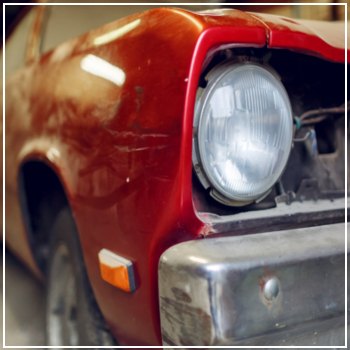Why Are Older-Model Cars More Prone to Rust?
Just as automakers have integrated more computer systems into vehicles, they've also prioritized improving corrosion resistance for both the body and its components. As a result, newer models are increasingly made from galvanized steel, which is treated to resist rust, and include aluminum parts. Here's what you need to know. Beginning in the 1980s, more car manufacturers began using galvanized steel, an alloy that bonds steel with zinc. While some cars in other markets are still made without galvanized steel, American models typically use this material for the body and panels by default. This bond places pure zinc on the outside, with another layer of zinc chemically bonded to the iron in the steel. Under ideal conditions, galvanized steel can last up to 70 years without corroding, which is why it's frequently used for original equipment manufacturer (OEM) parts. Despite its advantages, galvanized steel isn't infallible, and leaving your car exposed to the elements can still lead to damage. Anywhere the steel has been bent or welded is particularly vulnerable to rusting. To counteract this, some manufacturers apply a sealant in these areas for added protection against rust. What makes zinc so special when used for galvanized steel? Unlike paint, zinc doesn't flake off as a coating; instead, it forms an electrolytic bond with the iron in the steel. Since zinc covers the steel's surface in a thin layer, it directly interacts with oxygen in the air, protecting the underlying alloy and significantly reducing the risk of corrosion. However, the zinc layer does wear down over time, exposing the steel beneath. In regions with high moisture levels or where road salt is commonly used, the corrosion process accelerates, potentially leading to early rusting unless you maintain your vehicle properly. Aluminum is renowned for its corrosion resistance, prompting car manufacturers and aftermarket part producers to incorporate it more frequently. Lighter than steel, aluminum can enhance a vehicle's fuel efficiency. Unlike galvanized steel, aluminum is prone to contamination and its delicate structure may make it more susceptible to damage. Unfortunately, for several years in the mid-2000s and early 2010s, carmakers claimed aluminum was entirely corrosion-proof. In 2015, Consumer Reports debunked this idea, revealing that aluminum can experience premature corrosion. Consequently, Ford faced a class-action lawsuit over claims regarding the F-150 and Explorer models. Design innovations also play a role in combating rust. The undercarriage is often the first area affected by rust, so this section might receive an undercoating for comprehensive protection. Modern advancements minimize spots where mud tends to accumulate, and today's vehicles feature fewer seams, which are also common sites for corrosion. In some instances, plastic replaces metal in areas prone to rust. Manufacturers are also cautious about the metals used for exteriors. Even for trim pieces, galvanized steel is favored over stainless steel or chrome-plated materials. If you spot signs of corrosion or peeling paint on your vehicle, get in touch with DaSilva’s Auto Body for rust removal services. For more information about our offerings or to book an appointment, contact our Naugatuck location today. --- While technology has improved rust resistance, no vehicle is completely immune to corrosion. Regular maintenance remains essential to keep your car looking great and functioning optimally. Consider investing in routine inspections and protective coatings to extend the life of your vehicle. And remember, addressing minor rust issues early can prevent costly repairs down the line. As automotive trends continue evolving, staying informed about materials and best practices ensures your car remains in top condition. Whether you're restoring a classic or maintaining a modern model, understanding how rust forms and spreads can help you make smarter decisions for your vehicle's longevity. Finally, consider reaching out to local experts for advice tailored to your region's climate and driving conditions. Environmental factors like humidity, temperature fluctuations, and road treatments can all impact your car's susceptibility to rust. By combining knowledge with proactive care, you'll ensure your vehicle stays reliable and attractive for years to come. DRUM BRAKE PADS,AUTO BRAKE SYSTEMS BRAKE PADS,BRAKE PADS DONGYING BORUI BRAKE SYSTEM CO.,LTD. , https://www.boruiauto.com If you've ever attempted to restore a vintage, classic, or antique car, you've probably encountered rust patches on these older models. It's also likely that you've wondered why modern cars from the '90s onward don't show as much of this kind of damage.
If you've ever attempted to restore a vintage, classic, or antique car, you've probably encountered rust patches on these older models. It's also likely that you've wondered why modern cars from the '90s onward don't show as much of this kind of damage.Galvanized Steel
Aluminum Parts
Other Modifications